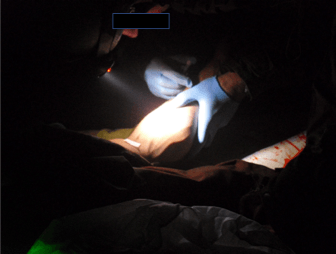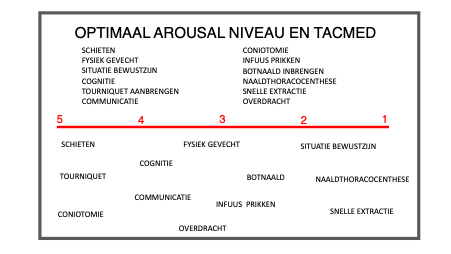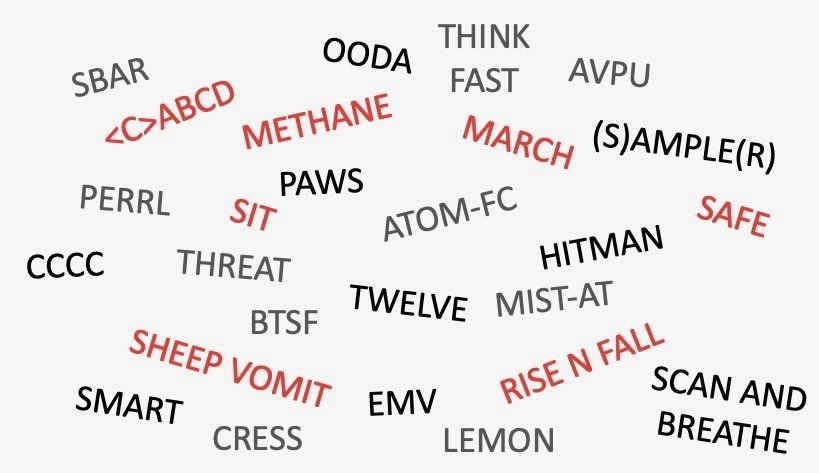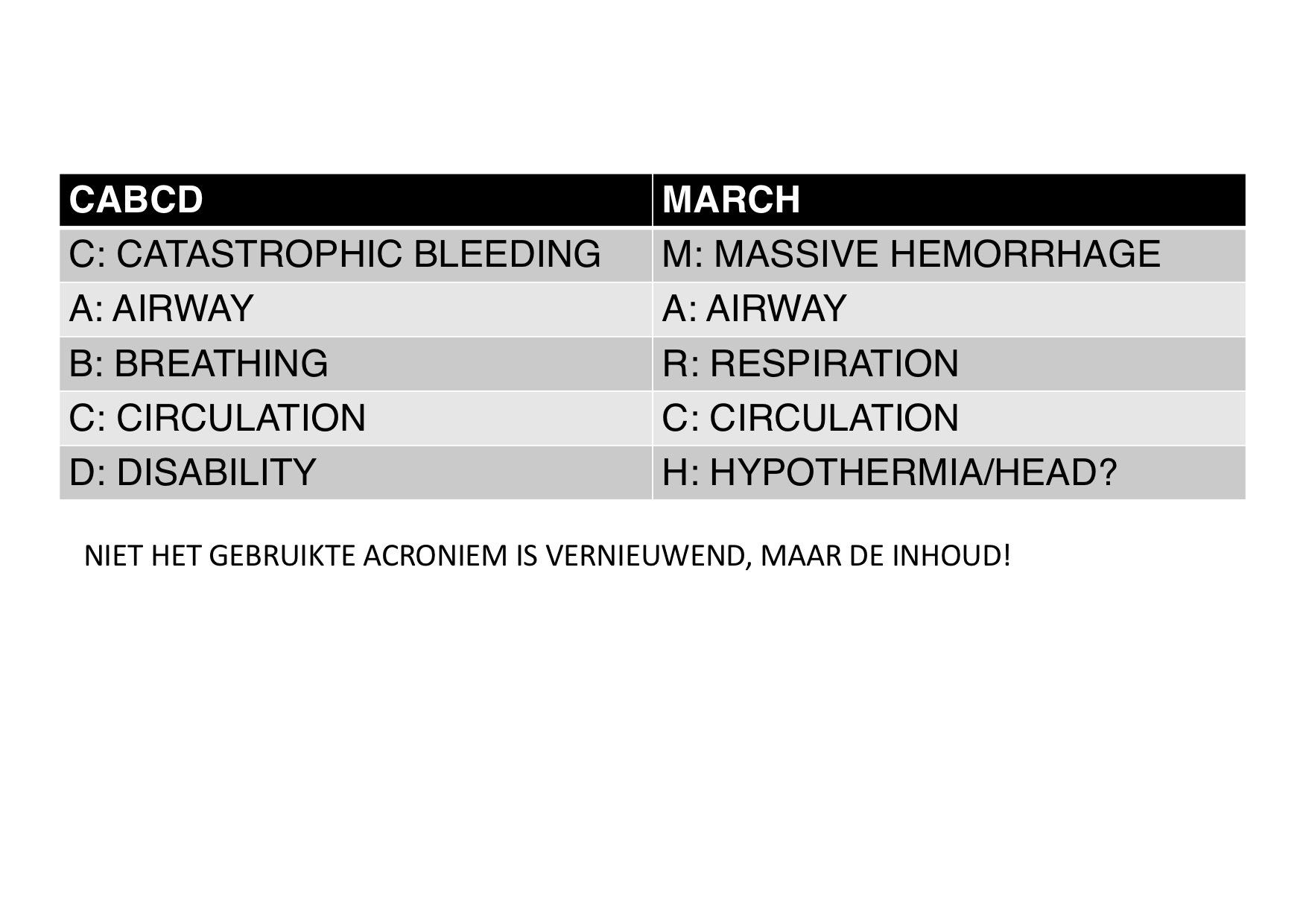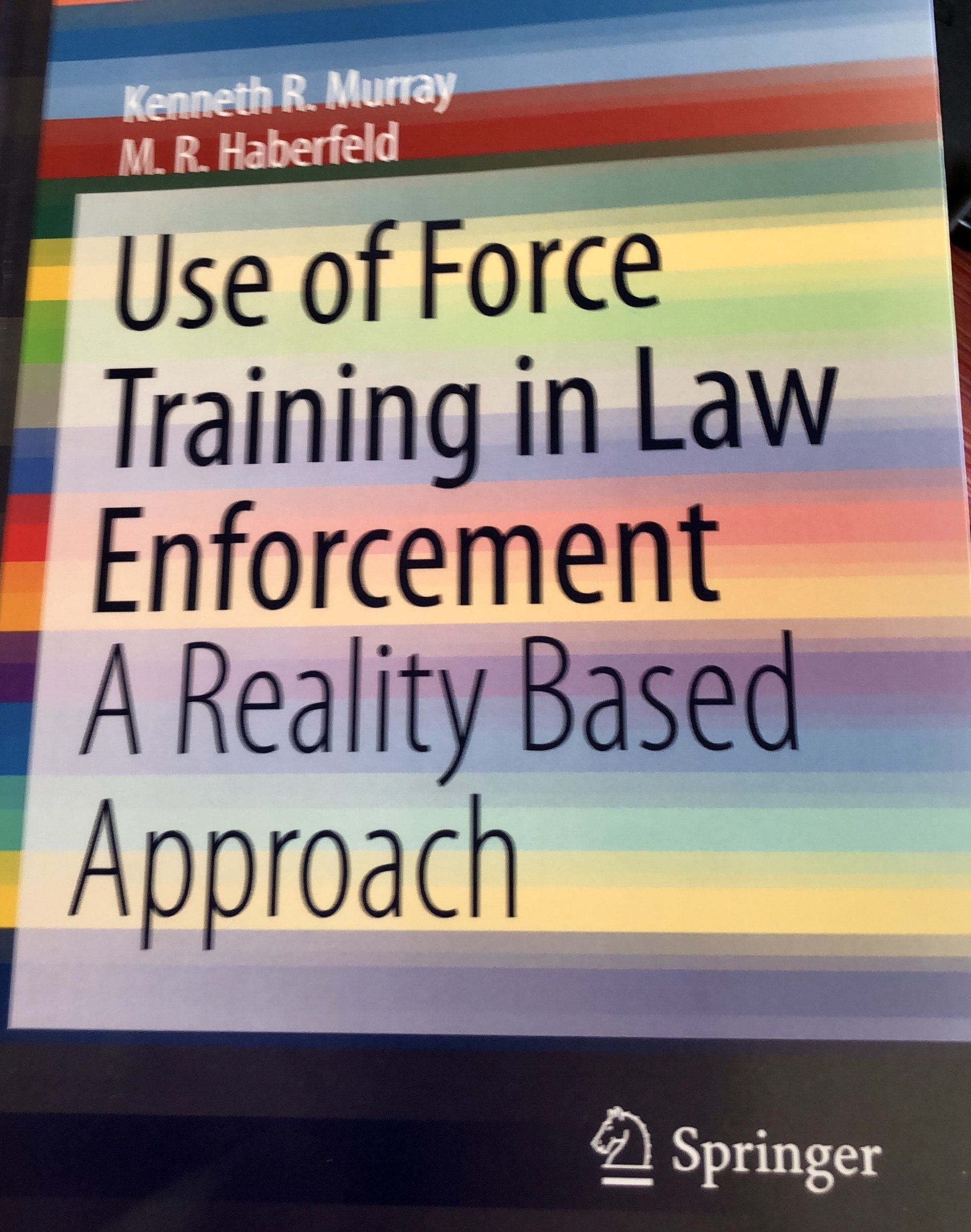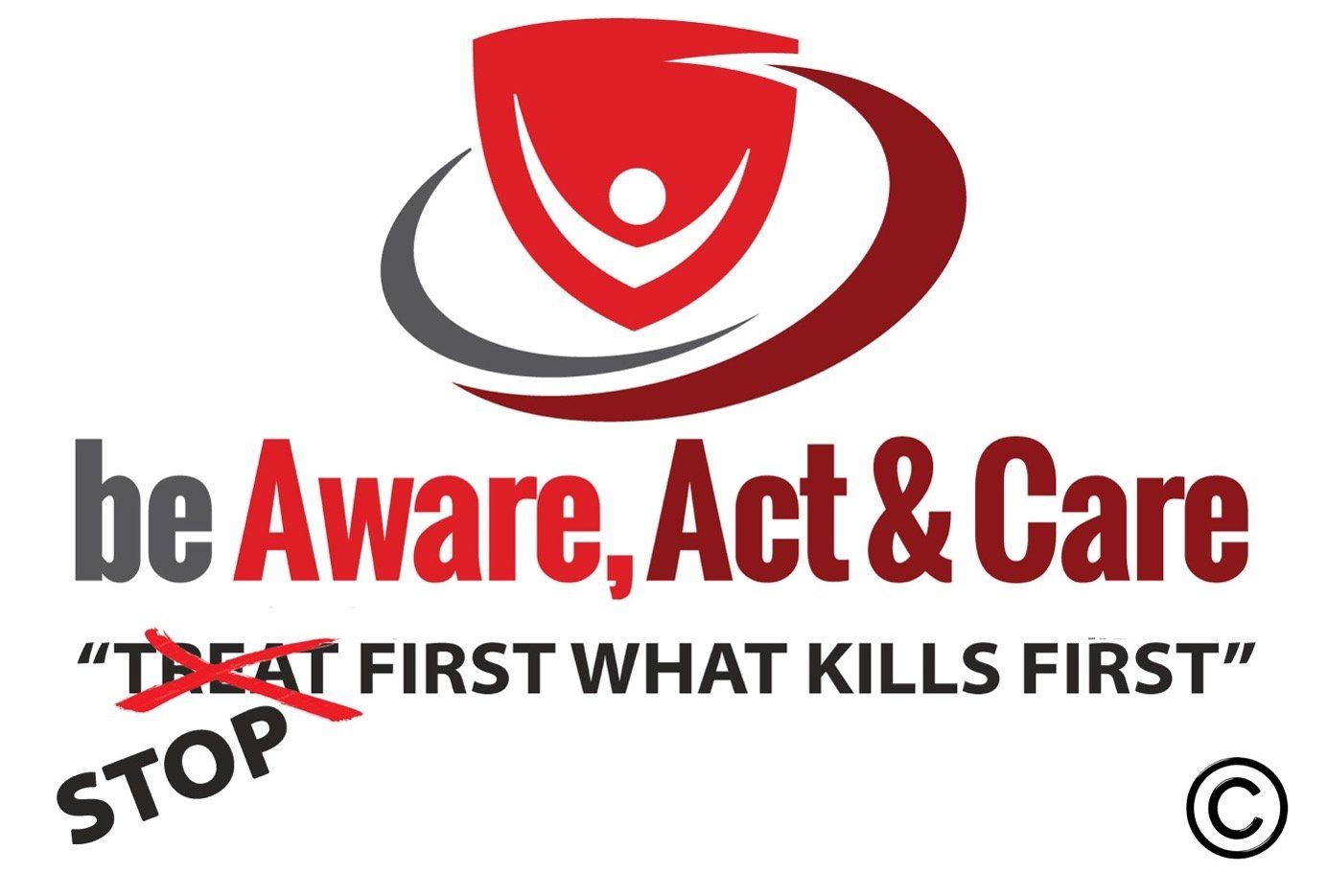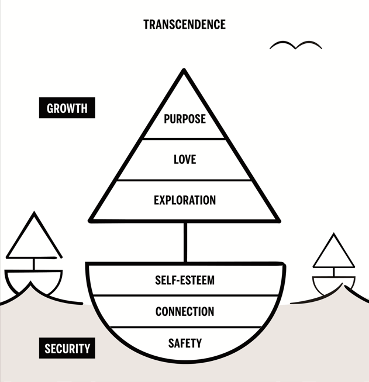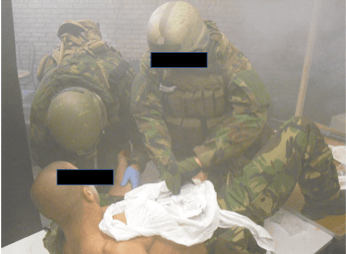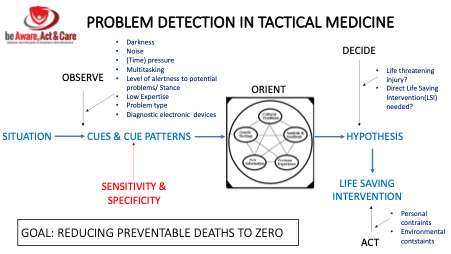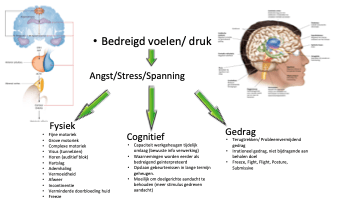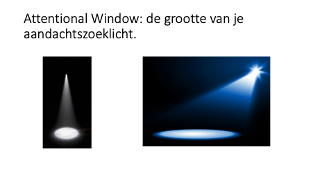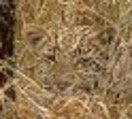door Maarten Leeflang & Cyrille M.N. Veltman
•
16 april 2021
People love to use mnemonics to learn new information and prioritise actions. By chunking information in such a way, they can more easily automate it. And that is necessary, working in a time constraint high threat environment. In such circumstances it is a must, not just to perfect the skills, but more importantly to free up the working memory for decision making and situational awareness under stress. The desired skills need to be developed and stress tested to ensure performance to ensure probability of performance in real world. When there is enough time to think, analyse and decide, we prefer to make use of any form of external memory like a notebook and take it with us everywhere we go. An important goal is to use the time that we have for learning and training, to automate the skills we need when there is no time to use our conscious mind. So for those who are interested we collected some acronyms, mnemonics and sentences people use in Tactical Medicine. In some cases the order of the letters is essential, in others not. Not every mnemonic works for us, we has to admit. Keep in mind that a mnemonic or acronym is just a memory aid. "as long as the heuristics/mnemonics/acronyms stay in the prefrontal cortex, they are by definition difficult to use in high stress environments. If you know some other memory aids not mentioned here, please let us know! We are interested too in the background of mnemonics (when did it saw the daylight and what was it for?) You can respond here on Linkedin! We will add your Mnemonics and share the result with you. Please share, so we can collect all kind of (tactical) medical mnemonics, which can help individuals to improve their skills. Definitions: Mnemonic : a system such as a pattern of letters, ideas, or associations which assists in remembering something. Acronym : an abbreviation consisting of the first letters of each word in the name of something, pronounced as a word. Awareness Think FAST F ocus A ttention S ituational awareness T empo COOL C alm down O bserve O utline L ead COOL was used in a startle surprise intervention training for pilots to remember the four elements of the training: (1)Stress management/Relaxation (2)Enhancing situational awareness (3) Sensemaking and (Re)framing (4)Decision making Training was to help pilots to: 1. Recognise and deal with the effect of the startle response ("de-startle") 2. Become aware of own control inputs and aircraft response 3. Prevent tunnel vision and/or confirmation bias 4. (re)gaining situational awareness 5. Start trouble shooting and/or follow designed procedures See: Landman A. Managing Startle and Surprise in the Cockpit BAD B reath A nalyse D ecide University of South Queensland ROC R elax O bserve C onfirm NL Aerospacecentre OODA There are lots of ways people describe the steps between stimuli and reaction. I love the OODA by John Boyd: O bserve O rient D ecide, A ct, in a loop because all action change the Observation. It is an ever going proces how humans deal with their environment. Simple and intuitive easy to understand. "Get Off the X" An immediate objective for caregivers working in a direct threat/hot zone is to "get of the X". The X is the area where a provider is currently standing, sitting, walking, or working that might be a target for the threat (e.g. in a sniper's line of fire or within the blast zone of an undetonated device) For TECC getting off the X means mitigating the cause of the direct threat or moving the patient and caregivers to a safer area. (from TECC manual) As they state: first responders can be challenged by an X that keep moving! Now you ar in the cold zone and a moment later it has turned into a hotline and vice versa. Trauma Care Mnemonics ATLS was the first who recognized that a short acronym for automating priority of care is essential for health care providers, especially when working in a time constraint high stress environment. Tim Hodgetts put the C in front of it for trauma care in military environments. < C > ABCD or cABCD C atastrophic Bleeding A irway B reathing C irculation D isability A variant I noticed is: DR CABCDE : D angers/Scene R esponse C atastrophic Bleeding A irway Management B reathing C irculation & Bleeding D isability E nvironment Because safety is a dynamic thing and you can unexpectedly end up in an unsafe situation, it is important to stay aware of any possible threats! Nice invention. Some made an extension of CABCD until H! CABCDEFGH E xposure/Examine/Environment F ull set of Vital Signs/ F luids G ive Comfort measures/ G et documentation/ G lucose/ H ITMAN MARCH Invented by British SOF Medics to incorporate the 1996 TCCC guidelines in their protocols. Nowadays it is the acronym used by TCCC and TECC and PHTLS in Austere environments. M assive hemorrhage A irway R espiration C irculation H ypothermia/ H ead(injury) Variants on MARCH are: MARCH - E ( E verything else) popular with Canadiens MARCH - H ( H ead injuries) MARCH - HE ( H ead Injuries and E verything Else) MARCH - E ( E ye injuries) S - MARCH - RV ( S ecurity, R ecovery position, V ital signs) MARCH - PAWS-B ( P ain Control, A ntibiotics, W ound dressings, S plinting, B urn Treatment) used in prolonged field care and there als is: MARCH - PAWS - RAVINE ( R esuscitate with whole blood and reduce tourniquets as soon as possible, A irway and Crick care package, V entilate and oxygenate using PEEP/lung protective strategies, I nitiate telemedicine consult and early evacuation, N ursing care, E nvironmental considerations (pad pressure points of the litter, earplugs for flight, medication for motion sickness). THREAT The Hartford Consensus recommends that an integrated active shooter response should include the critical actions contained in the acronym THREAT. T hreat suppression H emorrhage control RE rapid extrication to safety A ssessment by medical providers T ransport to definitive care “Stop the bleeding, keep victims warm and breathing” For me this works as a very simple method to keep in mind the most important things to make the difference on a very basic level. “Blood on the floor and four more” Internal bleeding in thorax, abdomen, pelvis and femurs Exsanguination can be the result of external or internal blood loss. This reminds me where to look for. PAWS Used as an extension of MARCH . P Pain A Antibiotics W Wounds S Splints HITMAN Hitman is a mnemonic used in Prolonged Field Care situations H Head to toe exam I Infections T Tubes M Medicines A Administration N Nursing Care mnemonic (SHEEP VOMIT) SHEEP VOMIT S Skin protection (sun screen, insects) H Hypo/Hyperthermia E Elevate head E Exercises (passive ROM) P Pad stretcher and Pressure points V Vital signs O Oral hygiëne M Massage (DVT profylaxis) I Ins and outs (diet & fluids) T Turn/cough/deep breath RISE N FALL This gives a summary of the chest examination of trauma victims R Rate I Injuries: search for all penetrating trauma S Symmetry of chest wall movement E Effort of breathing N Neck Signs F Feel: bone crepitus and surgical emphysema A Assess resonance L Listen to both sides of the chest L Look at the patient’s back (if not already done!) For me this one didn’t work so good. I keep in mind look, feel, listen and to ensure I don’t forget anything I use the patient as landmark and work top down. I look for respiratory rate and effort of breathing, neck signs, wounds, bruises or flail segments, symmetry of chest wall movement, then feel for bone crepitus, emphysema, thoracic movement and bilateral compression tenderness, I listen to breath sounds and if needed percuss both sides of the thorax. Some remember Neck signs as TWELVE : T rachea: Is it central? W ounds: Any wounds or hematomata? E mphysema: Any surgical emphysema indicating a local laryngeal injury, or tracked up the neck from a pneumothorax? L arynx: Is it intact? Is there any crepitus? V eins: Are they distended (cardiac tamponade; tension pneumothorax)? E very time: And definitely before covering up these signs with a collar or E xpose & E xamine Some do TWELVE-FLAPS For twelve see above and FLAPS is: F eel L ook A uscultate P ercuss S earch the sides and back ( BL )- ATOM - FC This is an mnemonic for recognizing life threatening chest injuries BL blast lung A Airway T Tension Pneumothorax O Open pneumothorax M Massive Haemorrhage F Flail Chest C Cardiac Tamponade AVPU Used for neurological assessment in a primary survey A lert V erbal P ain U nresponsive PERRL P upils E qual R ound R eacting to L ight EMV A more precise neurological assessment. Known as the Glasgow Coma Score E ye M otor response V erbal FISH-SHAPED This is a mnemonic of common causes of reduced GCS/Unresponsiveness F ainting I nfant convulsion S hock H ead injury S troke H eart Attack A sphyxia P oisons E pilepsy D iabetes FAST test Test for recognising a stroke. F ace (face drooping, does one side of the face droop or is it numb? Ask person to smile.) A rm weakness (is one arm weak or numb? Ask the person to raise both arms. Does one arm drift downward?) S peech (is speech slurred? Is the person unable to speak or hard to understand? Ask to repeat simple sentence) T ime (Time to call 911 (in NL 112) if a person shows any of these symptoms, even if the symptoms go away) Use the letters in FAST to spot stroke signs and know when to call 911 (112) CMS for checking the limbs. C irculation, pulse or capillary refill M uscular, have them move the limb S ensory, can they feel you touching them CPRO-BEAST CPRO-BEAST is used for vital signs. The CPRO are the primary vital signs and can be found in seconds using a SPO2 monitor. The secondary vital signs take longer to assess or they use ore equipment to find. Read more on: https://linkedin.com/pulse/cpro-handover-tool-aebhric-okelly/ or go to carom.org, the website of The College of Remote and Offshore Medicine Foundation. C apillary refill P ulse R espiratory O ximetry - B P (bloodpressure) E CG A lert Status S ugar T emperature For the assessment of new borns (not regular in TacMed :)) APGAR A ppearance P ulse rate G rimace A ctivity R espirations Abdominal Assessment DR GERMS D istention R igidity G uarding E visceration/Ecchymosis R ebound Tenderness M enses S tool/ S epsis DCAP BTLS An mnemonic used during body examination D eformaties C ontusions A brasions P enetrations B urns T enderness L acerations S welling Used in Corom ( S ) AMPLE ( R ) history Used for history taking: S igns and Symptoms A llergies M edications current used P ast illness (pregnancy/past medical history L ast meal/ last oral intake E vents (preceding)/Environment R isk factors OPQRST pain assessment O nset P rovoking or Palliating factors Q uality R egion & R adiation S everity T ime & T reatment LIAR DOA Used to question patients about pain in that order: L ocation I ntensity A ssociated Signs & Symptoms R adiation D uration O nset A ggrevating/ A lleviating Factors SOCRATES Another pain assessment tool S ite (where is the pain) O nset (what were they doing when it started/ Did it start suddenly or slowly worsening) C haracter (the patients description of the pain) R adiation (does the patients pain radiate/travel) A ssociated Symptoms (any other associated symptoms) T ime/Duration (how long the pain has been going on) E xacerbating/Easing (Exacerbating or easing factors) S everity (Patients pain score (0-10 or 1-3) SOMOSA DIET For Social history S exual Health A llergies M edication O ccupation S moking A lcohol intake D iet I mmunisations E xercise T ravel (recent) SAD ONE Social history checklist S moking A lcohol D rugs O ccupation N utrition E xercise HI RICE Used for treatment of an ankle sprain H ydrate I buprofen R est I ce C ompression E levation Cardiac arrest mnemonics 4H's/4T's - reversible causes of a cardiac arrest H ypoxia H ypovolaemia H ypothermia H yperkalemia T ension pneumothorax T oxines T amponade T hrombosis Mnemonics regarding incident management at the scene or the hospital Unexploded devices are managed according to the 4C’s C Confirm it is a suspect device C Clear the area of people C ordon the area a safe distance from the device C ontrol the cordon to prevent access of unauthorized personnel C Command and Control S Safety C Communications A Assessment T Triage T Treatment T Transport In the Care under Fire situation it can be useful to remember SAFE S Send signal and shout for help A Assess the situation F Free the casualty from danger E Evacuate (e.g. drag) the casualty to as safe area to undertake Care Under Fire Information transmitting from the scene must be transmitted in a structured format to ensure no errors of omission and to optimize message handling by the recipient. The METHANE mnemonic from the MIMMS course has now been widely adopted by UK Defence Services: M Military call sign, Major Incident Standby/ Major Incident Declared (multiple casualty incidents) E Exact location (GPS grid reference) T Type of incident H Hazards, present & potential A Access (including suggested Helicopter landing site or RV point: the operations room will assess reports of recent incidents to ensure no pattern is being set by using the suggested HLS/RVP N Number and severity of casualties E Emergency services, present & required SIT report Method of a SIT report: Identify receiving care provider on evac platform Establish direct contact with receiving provider (Radio Comms/Eye Contact/ Hand Contact*) Provide a SIT Status on each casualty beginning with most serious: S table or Unstable I njuries (Life Threats & Mechanism of Injury (MOI)) T reatments (Drugs & Interventions) *if verbal communication is difficult, point to each injury and treatment and confirm acknowledgement. SLIDE Used by CitizenAid to communicate an incident report: S ituation (type of incident, if you can see attackers, number and descriptions) L ocation (describe exactly where the incident is, Direction the attacker(s) are travelling?, Say where you are hiding) I njured Numbers (Walking?/not walking?/Children?, and estimate of number is OK, Can you see any dead?) D anger (what weapons are being used?, can you hear shooting?, Have you heard explosions?) E mergency Services (Do you have any help with you?, The operator will inform all services) See the Citizen aid app. AT MIST or MIST AT Handover the patient and provide all the information needed for optimal care in the trauma chain is essential. It helps when sender and receiver make use of the same system. For me AT MIST or MIST AT as you wish works best. The patient is handed over to the next level of care using the MIST mnemonic: A Adult/Child T Time M Mechanism of Injury I Injuries or illness found/ suspected S Signs/ symptoms (P, BP, RR, SpO2), Temperature, EMV, AVPU T Treatment given SBAR SBAR is a Clinical Communications Format S Situation (what is going on with the patient) B Background: What is the patient’s pertinent history, clinical background, additional information? A Assessment: What do you think is going on with this patient? R Recommendation(s): What do you think needs to be done? ASHICE Time critical/urgent patient pre-alert A ge (estimated or known age) S ex (gender) H istory (a brief history/background) I njuries/Illness (known and suspected) C ondition (is the patient stable or unstable) E TA (estimated time of arrival) POST-TERM mnemonic used to conduct an assessment of the region where you are deploying to: P olitical O perational S ecurity T ravel T errorism E nvironmental R eligion/Morality M edical See Corom Some mnemonics to control arousal and keep awareness in high stress situations! B EAT T HE S TRESS, F OOL! ( BTSF ) The “ Beat the stress, fool ” mnemonic is a recall of the Performance Enhancing Psychological Skills (PEPS) people may use in high stress environments. The whimsical nature of the mnemonic may induce smiling, which helps to break the stress escalation cycle. B reath T alk (Self) S ee (Mental Rehearsal) F ocus with Trigger word Scan and Breathe as a trigger word (or trigger sentence :)) I use this after finishing each letter of the used trauma acronym. It helps me in a few ways: • Don’t stay in a bubble for too long • Keeping my arousal on an appropriate level for optimal prestation • Stay aware of my environment (danger, changes, team members) so that I can respond when necessary. • It helps me to optimise the team effort. PETTLEP acronym used as framework in Imagery (mental representation of perceptual experiences and sensations, without having the actual experience. P hysicality (wear same clothes and hold instruments) E nvironment (do imagery in same location as where you practice) T ask (Imagine the task) T iming (use real time) L earning (adjust imagery to won level of experience) E motion (invoke same emotions as during actual performance) P erspective (take on different perspectives like first or third person) I'M SAFE/ IMSAFE A tool to assess personnel their fitness to operate. It's the Aeronautical Information Manual's recommended mnemonic for aircraft pilots to use to assess their fitness to fly. I llness (suffering illness or symptoms of any illness which might affect them in flight?) M edication (prescription or over the counter) S tress (overly worried about other factors in their life? This can be a powerful distraction) A lcohol (legal limits vary by jurisdiction) F atigue (sufficient sleep and adequate nutrition?) E motion (recovered from any upsetting events such as loss of a family member) Setting goals and making agreements SMART Nice to formulate your goals and to make afspraken with others. I keep in mind that a goal is just an intention that most of the times need to be changed of aangepast during the way to reach that goal. To make sure your goals are clear and reachable, each one should be: S pecific (simple, sensible, significant) M easurable (meaningful, motivating) A chievable (agreed, attainable) R elevant (reasonable, realistic and resourced, result-based) T ime bound (time-based, time limited, time/cost limited, timely, time-sensitive) PURE PURE is an extension on SMART P ositively Stated U nderstood R elevant E thical CLEAR CLEAR is another extension on SMART C hallenging L egal E nvironmentally sound A greed R ecorded And a few others: CRESS -O A mnemonic used in CBRN C onscious R espiration E yes S ecretions S kin Other Leadership (LDERSHIP) L oyalty D uty R espect S elfless Service H onor I ntegrity P ersonal Courage LEMON assessment for difficult intubation L Look externally E Evaluate the 3-2-2- rule M Mallampati O Obstruction N Neck mobility SPEEDBOMB & POSTLIVES from Corom Fieldguide As an intubation checklist S uction P ositioning (placed in sniffing position) E nd tidal CO2 E quipment (ventilator, bougie, 10 ml syringe, layyngoscope, 2ET tubes) D rugs (Sedation, Anaesthetic, Muscle Paralytic) B ackup (Surgical Airway, Supraglottic airway) O xygen (BVM or NRB mask) M onitoring SPO2 B riefing (allocate jobs for the team) P repare equipment ( SPEEDBOMB checklist) O xygenate (Pre) (for at least 2 minutes) S edation drugs T erminate muscles L aryngoscope I nflate tube cuff V erify placement E tCO2 S ecure the tube A-TRAMP a drugs administration checklist used in Corom Fieldguide (www.corom.org) A llergy - T ime (right time to give this drug?) R oute (acceptable route of choice for this drug and the desired effect?) A mount (right amount and concentration?) M edication (right medication?) P atient (right patient?) AEIOU-TIPS Altered mental status checklist A lcohol and a cidosis E pilepsy, e nvironment, e lectricity and e lectrolytes I nsuline O xygen and o verdose U raemia and poor kidney function T rauma I nfection P oisoning S eizure and s troke Types of Shock: CASH-N C ardiogenic A naphylactic S eptic H ypovolemic N eurogenic Sepsis treatment: FLASHED F luids L actacte A ntibiotics S ugar H ydrocortisone E pinephrine D iarrhoea management F.E.A.R Management Skills Acronym used by the famous Tony Blair F alse E xpectations A ppearing R eal F alse E vidence A ppearing R eal F ailure E xpected A ction R equired Some Dutch mnemonics HALO H anden (Hands) A fstand (Distance) L ichaam (Body) O mgeving (Environment) Gebruikt door politie: Zie: https://www.erikheinacademy.com/wp-content/uploads/2018/03/Fysiek-ingr.pdf Erik Hein: "nadeel is het temporele karakter: in sommige situaties is het beter eerst naar de O (omgeving) bekijken en dan pas naar de handen (H)." HALO wordt ook wel een principe genoemd met als risico dat de technische vaardigheden dan niet meer serieus genomen worden. Een principe (=tactiek die meervoudig toepasbaar is) is echter leeg zonder techniek." geldt zowel voor communicatie als in fysieke situaties. HOLK H als (Neck) O ksels (Armpits) L iezen (Groin) K nieholten (Knees) Gebruikt voor het opsporen van ernstige bloedingen in kritische gebieden. Het betreft gebieden waar de grote bloedvaten zich dicht onder het oppervlak bevinden. Nu hebben kogels en scherven daar niet een typische voorkeur voor, dus vergeet niet de rest van het lichaam af te zoeken. De TCCC gebruikt de "Bloodsweep". PAMAN Ezelsbruggetje dat wordt gebruikt voor de handelingen die moeten worden verricht in het kader van de organisatie op en rond de plaats van het ongeval vóórdat daadwerkelijk eerstehulp kan worden verleend: P ersoonlijke veiligheid waarborgen A ndermans veiligheid door anderen te attenderen op gevaar M arkeren van de plaats van een ongeval A larmeren van de commandant of de civiele hulpverleningsdienst(en) N oodtransport toepassen met behulp van de handgreep van Rautek Ook bij CBR gebruikt zag ik. Daarbij is het markeren van plaats ongeval belangrijk. In de militaire setting spreekt de M van PAMAN mij voor de rest wat minder aan. Cover and Move

